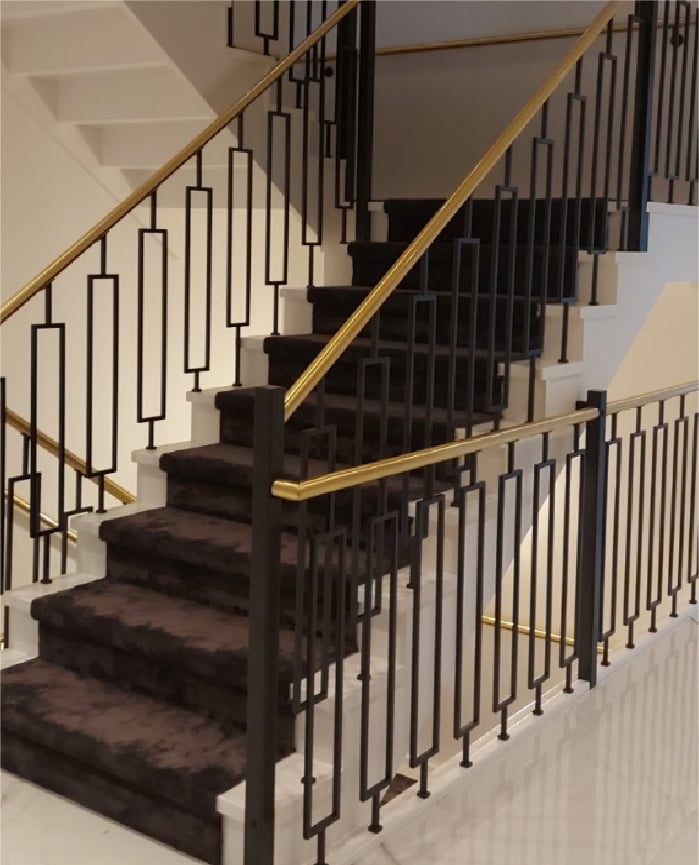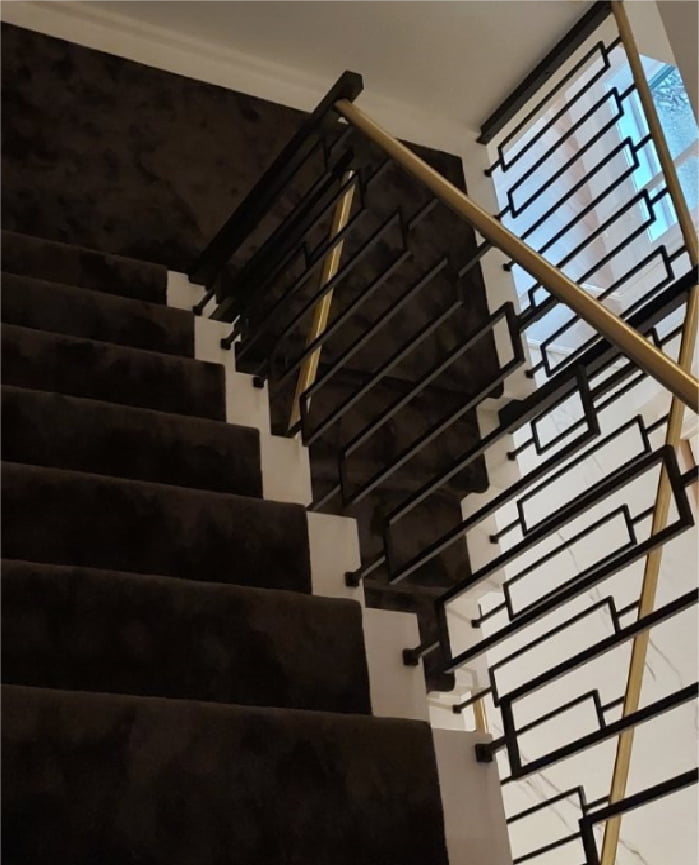PRODUCT CARE
INFORMATION
Care and maintenance of your products is essential for appearance, wear, integrity and warranty. Please read the following very carefully to ensure all products received from LHM Step will remain as a feature in your environment for years to come.
All timber care
Timber is a natural product and expands and contracts depending on seasons, humidity, heat, direct sunlight, wind and just the natural movement caused by the timber grain dynamics in each individual timber board. The level of movement can vary between any or just one part of your product and also varies between the species of timber. Whilst in most cases, little or no movement occurs this cannot be guaranteed and is the maintenance risk the client is taking selecting a wide board product. With wide board products, ‘NO WARRANTY’ is given for movement, splitting, shrinking or buckling as this cannot be controlled with a “SOLID WIDE BOARD PRODUCT” and you must be aware this is part of the natural product selection maintenance you may have to address throughout the life of the product.
How to limit movement?
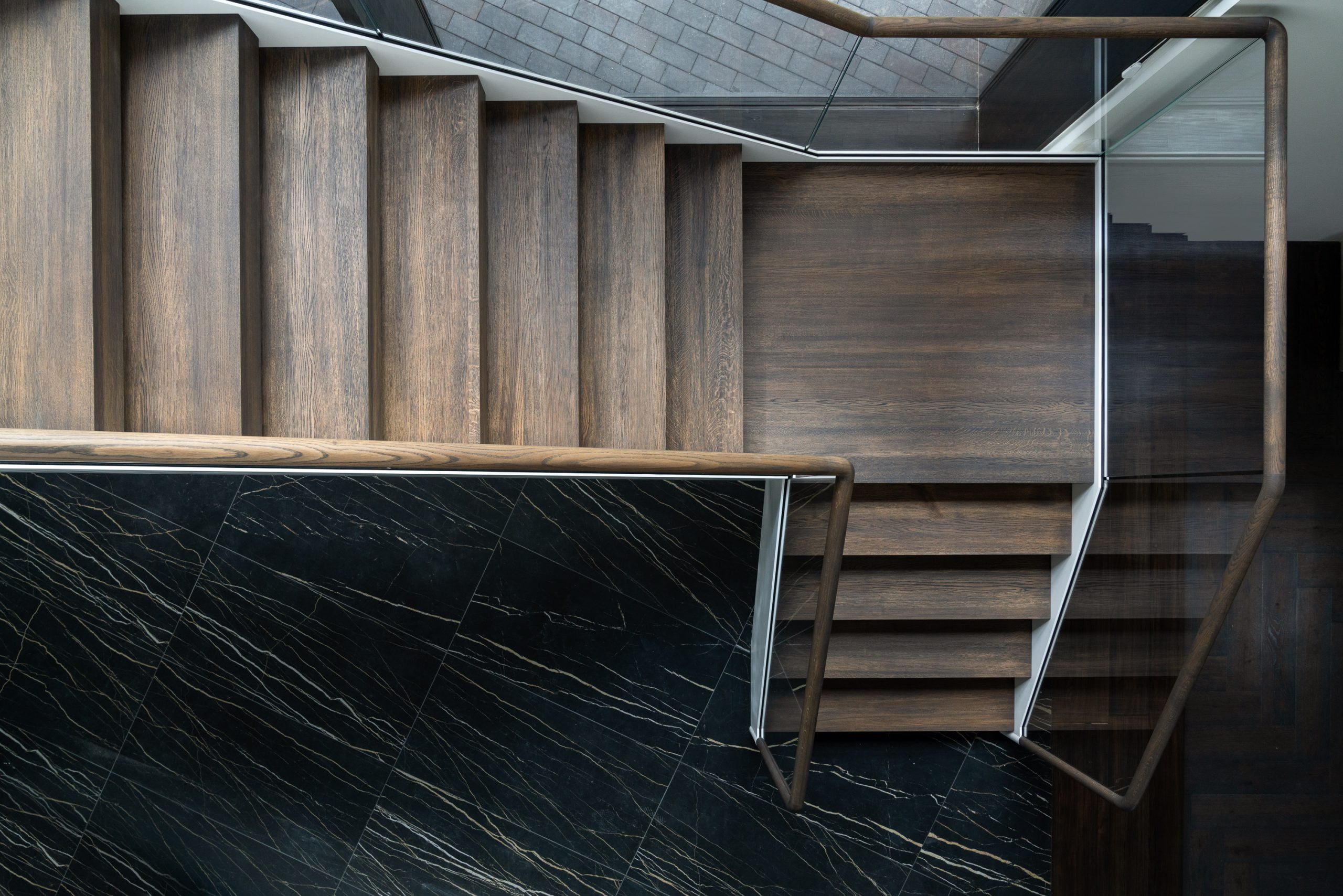
Wood types
All wooden staircase parts are produced from the highest quality wood panels (A/B class). The factory ensures that all wood panels would be delivered according to strict requirements for wood humidity to ensure elimination of cracking risk. Each type of wood panel can be made in solid or finger joint (FJ) way. What is the difference between solid and FJ? Solid hardwood planks are created from a single, thick piece of solid wood. A finger joint, also known as a comb joint, is a woodworking joint made by cutting a set of complementary, interlocking profiles in two pieces of wood, which are then glued. The greatest advantage of solid wood is that the wood is the same all the way through, so repairs are relatively easy. The two most important advantages of finger jointed lumber are straightness and dimensional stability.
‘When conditions are extremely wet or dry and rapid changes in humidity occur, the timber may distort, or display surface checking, due to extreme expansion or contraction. These conditions are beyond our ability to control and therefore, where our products are to be installed in a building, the relative humidity must be maintained between 40% – 60%. In order to achieve this, humidifiers/evaporative coolers may be required in very dry weather, and air conditioners may be required in very moist and humid areas. Failure to maintain relative humidity within these levels may result in damage to your stair.
LHM Step stairs usage
Stairs are for indoor use only. Seller has no responsibility for humidity penetrating the construction, damage from humidity or wear of construction. When using stairs, walk only, placing one foot on each step. Do not allow more than 3 people on one stair at the same time; it is also not recommended to have two people walking on the stairs in different directions. Do not touch any stair part with sharp edges. Do not flood with any liquid. Do not wear wet outdoor boots while walking on stairs. All wooden products are faded, discolored and exposed to solar energy, so fading is not a defect. We recommend that the staircase is protected from direct sunlight. Items built for a longer period of time and exposed to even indirect sunlight (light through the window) leave a fading stain underneath, so changing the position of items on the wooden parts is recommended to maintain a consistent color throughout the product. Cleaning must be done without abrasive particles to prevent mechanical and chemical damages during the cleaning. The stairs are designed for an optimum microclimate home. Wooden products, despite being dried to an appropriate moisture and coated with protective oil, tend to absorb and release moisture into the air. This means a constant change in dimensions that can influence the deformation, curvature or even, in rare cases, decomposition of the wooden parts. For best maintenance of the staircase you should:
• Regulate humidity in the rooms. It is recommended to maintain the 50-60% relative humidity and a room temperature of 18 to 22 C degrees.
• Do not forget to ventilate! Use humidifiers to maintain required moisture level if the room humidity drops to lower than the recommended range.
• Irrigate the premises during the summer, in high heat and low humidity.
• Special attention should be paid to humidification during the heating season in winter, especially with a solid fuel heater, infrared heater, convection heater or gas heater.
• Avoid major changes in temperature by purposefully and systematically raising the temperature to expel the room. It is a very common phenomenon in summer cottages, during the winter season, where efforts are made to warm the room as quickly as possible after an extended period of inactivity, often resulting in wood deformation.
• Take into account the existing recovery system. If you have purchased a system that does not have automatic humidity control when installing your living space, the recuperation system will dry the air.
• Make sure that air-conditioned rooms are kept humid, as air is known to be drained.
When the staircase is freshly washed, the stairs can be slippery, so it is recommended to avoid using the stairs until they have dried; it is also recommended that a warning sign should be used to indicate that the stairs are wet.
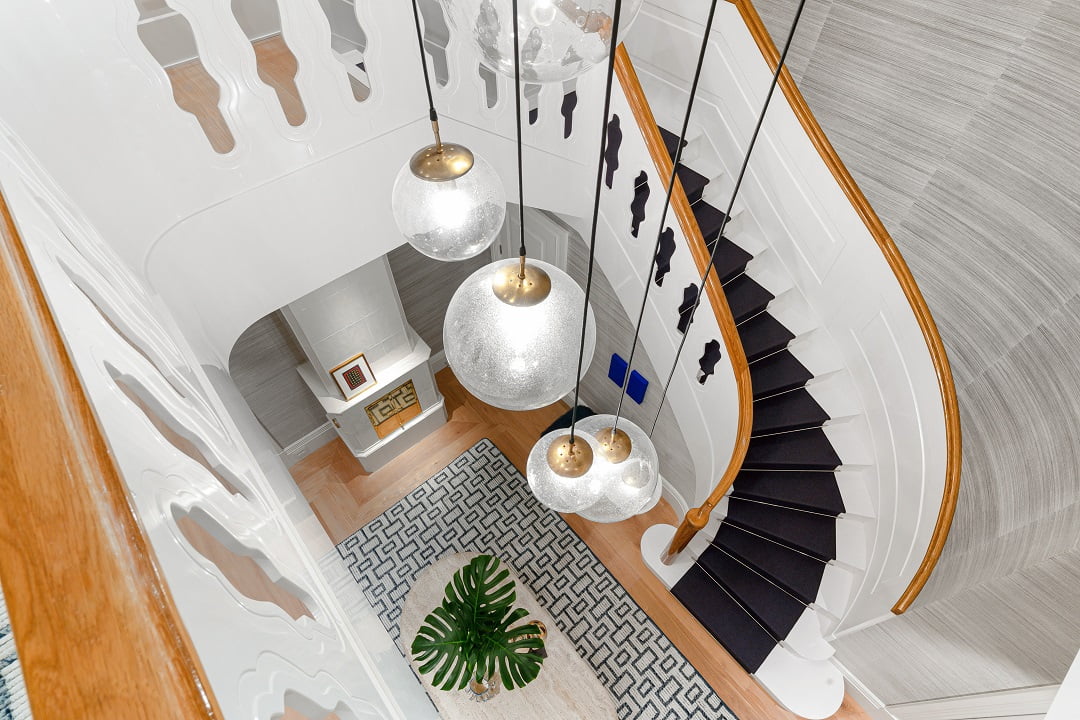
Wooden stairs parts finish and care
Varnished and painted stairs
The stairs have 2-3 layers of paint / varnish, depending on how well the wood attracts the color. Either a water-based paint or polyurethane lacquer is used. Regular cleaning is recommended. Dust can be removed with a vacuum cleaner, microfiber cloth or spring brush. Remove stains with a cloth that has been lightly moistened in lukewarm water. If necessary, apply a mild detergent. If refinishing / remediation is required, the area must first be cleaned. Then sand the area with fine-grained sandpaper (180-240). Clean the area again with a slightly damp cloth. Paint / coating should be done as soon as possible after plastering the area, preferably within one day. Please contact us for exact color code of your staircase.
Oiled stairs
These stairs are treated with natural glossy oil or Rubio Monocoat oil added color as desired. Cleaning of oiled stairs must be done with dry methods as much as possible (vacuum cleaner, microfiber cloth or spring brush).
Stains can be removed with a slightly damp cloth and neutral detergent (pH 7). The screws should be tightened after a period of use. Remove the wooden plug that covers the screw, use the Torx -30 bits and tighten the screw. To remove marks that cannot be washed away, sand the surface with fine-grained sandpaper (320-400). Apply oil and after a few minutes, wipe off excess oil. After 2-3 treatments, the surface will have a smooth gloss that is easy to clean. The same method is used to oil the surfaces where there is great wear and tear.
Attention! Wipes / rags used should be treated as flammable waste.
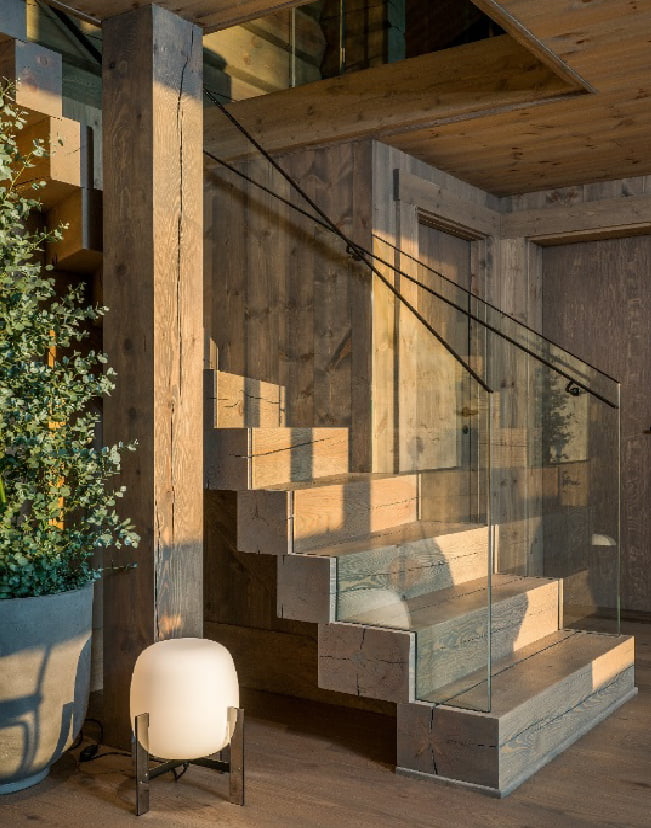
Log step staircases
This wild design staircase is made from massive logs. Therefore, it will change shape dimensions and the natural cracks or other sounds may increase, depending on the dryness of your room. None of this (cracks, shape dimensions, sounds, etc.) can be accepted as a subject for guarantee claim as long as staircase can be maintained for its general function. If the top of the step cracks, there is a risk of splits. In this situation, we recommend laying the gaps with acrylic.
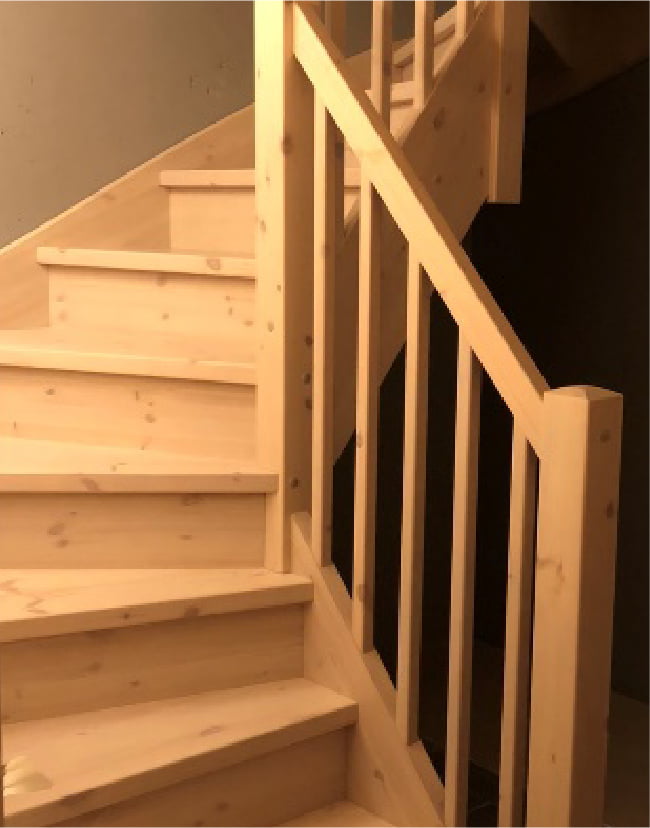
Pine staircases
Pine is very soft wood, so if the house is a particularly dry environment, the pine steps might slightly change dimensions and make natural cracking sounds. None of this (cracks, shape dimensions, sounds, etc.) can be accepted as a subject for guarantee claim as long as staircase can be maintained for its general function. There is a risk of splits if the top of the step cracks. In this situation, we recommend laying the gaps with wood filler
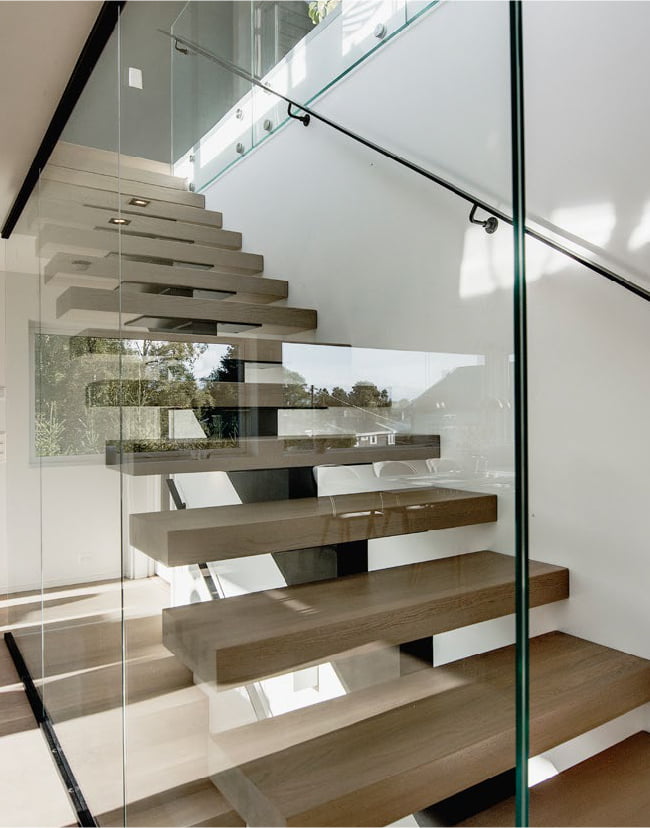
Glass
The stairs have laminated glass to improve resistance and safety. Clean glass using your preferred method for windows. Feel free to use spray products, lukewarm water, squeegee, newsprint paper, vinegar water etc.
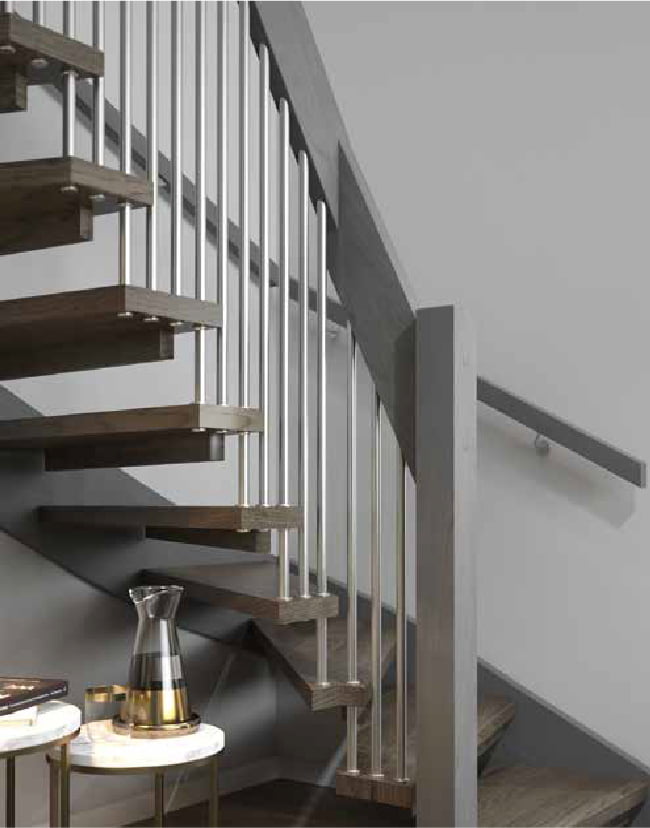
Stainless steel care
Routine Cleaning and Maintenance – Both exterior and interior building components require routine cleaning, the frequency of which is dependent upon environmental conditions and aesthetic requirements.
• Permitted Grade S304
• Cleaning required 2 x Year for Rural Areas
• Cleaning required 3 x Year for Other Areas
• Cleaning required frequently for corrosive environments such as, sea-shore areas, near railroad tracks, near iron works, near volcanic areas, eaves, soffits, under-eave components and other building components.
Metal staircases
Metal staircases are particularly popular for commercial buildings due to their longevity. A quality metal staircase can last for decades, making it a wise investment for apartment buildings, industrial warehouses and other businesses. While metal is durable, it does corrode over time, especially when exposed to the outdoor elements. Maintenance can help keep metal staircases safe and extend the life of the structure.
Routine maintenance for metal staircases
Quality outdoor metal staircases are galvanized, or alternately galvanized and then painted to protect the metal from rust and corrosion. Over time, this protective covering can wear off. The best way to protect the paint and stairway is to keep it clean. Pressure washing away dirt and debris can help reduce wear and tear. In addition to regular cleaning, metal staircases will need new paint or coating every few years. Rust can occur when the coating wears through, exposing the metal. Keeping the protective coating updated can help reduce wear and tear.
Professional metal repairs
Eventually metal staircases will need repairs. Treads, railings and welds may become weak, creating safety hazards. Inspections of the staircases should be made routinely to check for loose railings, rust and holes in the metal. As LHM Step company specializes in metal staircases, we can repair or replace components as needed. Metal stair restoration can extend the life of a staircase, delaying replacement. Metal staircases are low maintenance, but they do still need some routine care. Keeping outdoor metal staircases clean and coated can prevent premature wear and tear.
All our metal products are made of S355 steel. Metal parts, bolts and screws are galvanized or both galvanized and painted to protect from rust or corrosion.
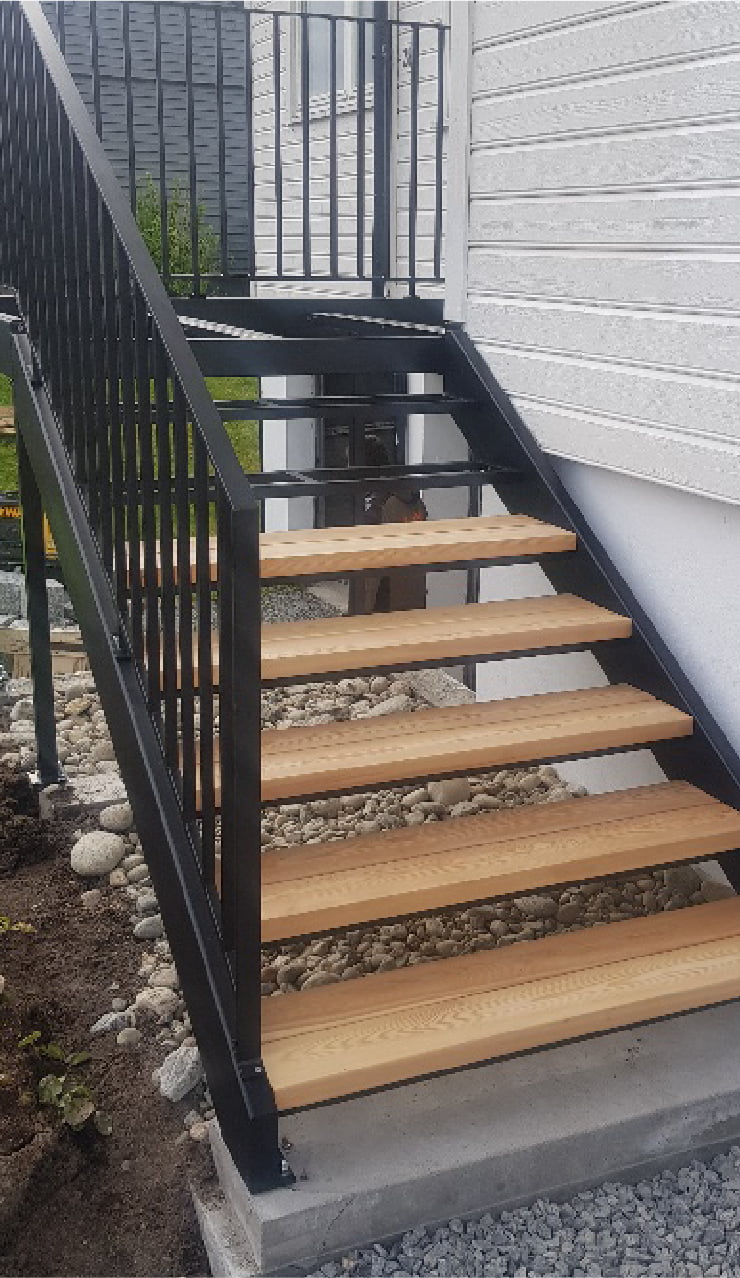
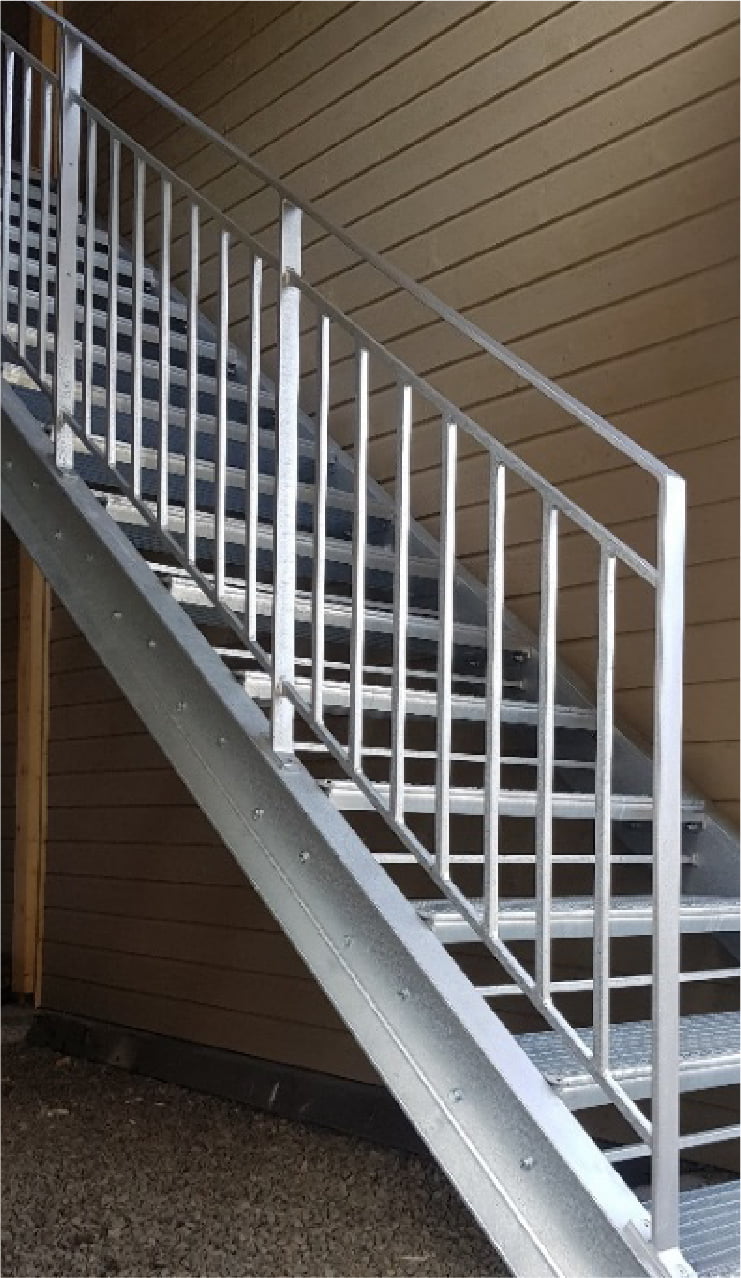
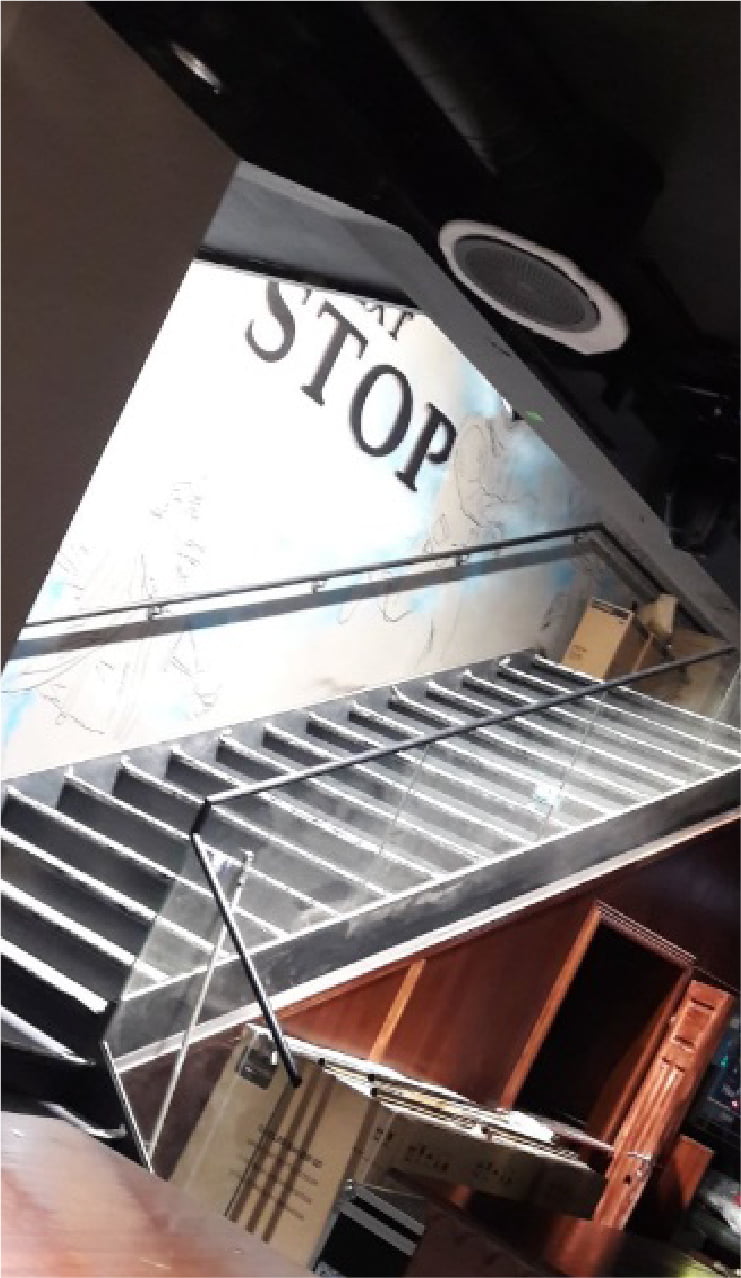
Galvanized steel or stainless steel?
Galvanized steel and stainless steel are both strong and durable. However, they are not without a number of flaws. The two types of steel are common materials in the construction industry have nearly the same appearance but when it comes to composition, strength, and weight they are quite different.
As opposed to regular steel made of iron, galvanized steel is coated in zinc making it corrosion resistant. Hot-dip galvanizing is the most common galvanization method, and is geared to ensure the steel holds well and that it does not rust when exposed to various elements.
Hot-dip galvanization is a form of galvanization. It is the process of coating iron and steel with zinc, which alloys with the surface of the base metal when immersing the metal in a bath of molten zinc at a temperature of around 449 °C. When exposed to the atmosphere, the pure zinc (Zn) reacts with oxygen (O2) to form zinc oxide (ZnO), which further reacts with carbon dioxide (CO2) to form zinc carbonate (ZnCO3), a usually dull grey, fairly strong material that protects the steel underneath from further corrosion in many circumstances.
Galvanized steel is widely used in applications where corrosion resistance is needed without the cost of stainless steel, and is considered superior in terms of cost and life-cycle. It can be identified by the crystallization patterning on the surface.
Stainless steel is made by adding chromium to regular steel in a molten state. Chromium makes stainless steel strong and highly resistant to rust. It is tolerant of water whether fresh or salty – this sets it apart from galvanized steel. While stainless steel retains its anti-corrosive properties longer than galvanized steel, it is not the best material to use in places where it is exposed to chlorine, such as swimming pools. It is, however, a great option for making working parts of tools like saw blades.
